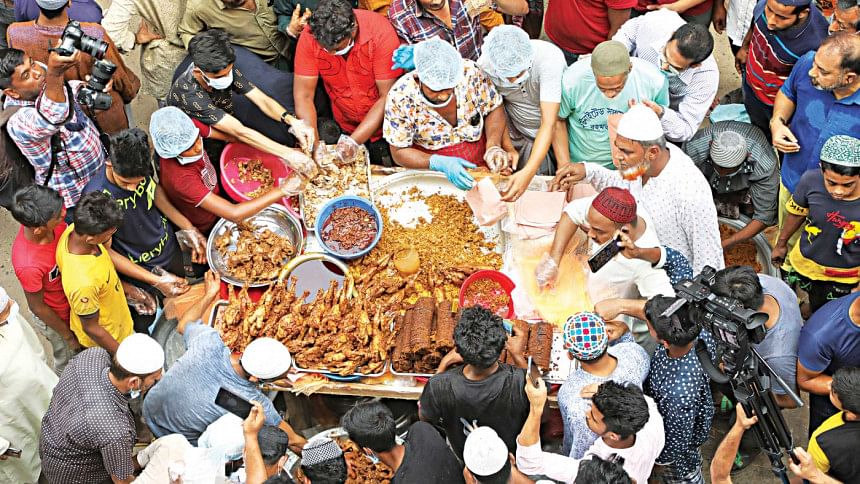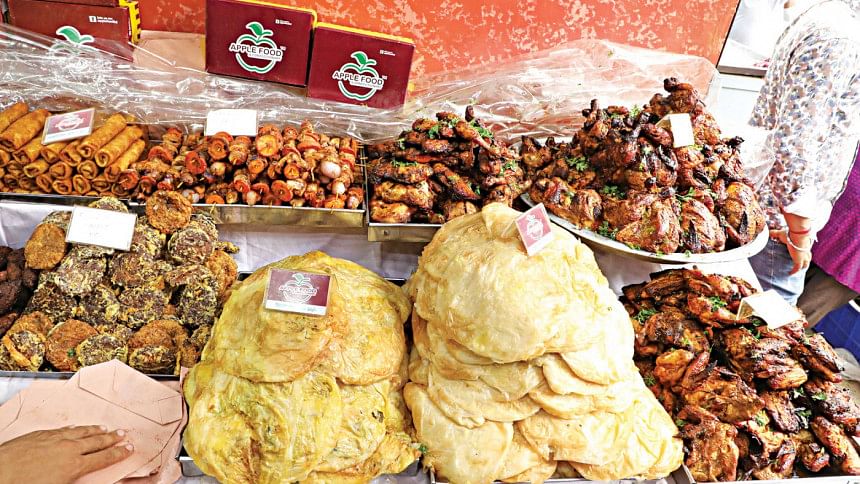5 iconic iftar bazaars around the world

During the month of Ramadan, Muslims gather together to break their fast with a nice and hearty iftar. The meal usually comprises of foods that are not usually eaten any other time of the year. And these specialty items are sold at large iftar bazaars that open during Ramadan.
Little Siirt, Istanbul
Little Siirt is a modest iftar market located in the capital of Turkey. During Ramadan, dozens of people line up near the various stalls scattered around this picturesque Kurdish square.

Out of the various items sold there, the two most popular dishes are the 'buryan kebab' and the 'perde pilavi.' The buryan kebab is salted lamb that is been slow cooked in a pit, resulting in succulent meat encased in a crispy layer of fat. Perde pilavi, on the other hand, is a spicy pilaf made of rice, chicken, almonds and currants, all wrapped in a thin pastry shell and bakedin a cup shaped mould.
Mohammad Ali Road, Mumbai
The market started a few decades ago with just a handful of stalls surrounding the Minara Masjid. Now the bazar has also become a massively popular tourist attraction. During Ramadan, the streets become packed with massive crowds and there have even been reports of Bollywood stars queuing up to enjoy the food. One of the signature dishes here are the 'malpua' with 'rabri' sold at Suleiman Usman Mithaiwala. Another iconic delicacy is the Sanju Baba chicken sold at Noor Mohammedi Hotel. Named after Sanjay Dutt, this spicy chicken curry is actually the famous actor's own recipe!
Tajrish Bazaar, Tehran
There is a surprising variety of street food and dishes sold in Tajrish Bazaar. One of the most common iftar snacks sold there is 'ash reshteh,' which is a lentil and noodle herb stew. Another equally as popular snack is haleem. The Persian variant of haleem is actually a sweet wheat and beef stew that's been topped with brown sugar and sesame seeds. But if one ventures deeper into the winding walkways of the Tajrish Bazaar, they might find themselves rewarded with the intoxicating smell of sizzling koobideh, minced meat that's been mixed with spices and grilled over hot coals. The grilled meat is then placed in a roll of Persian flatbread and the entire thing is dipped in a pot of a buttery tomato sauce.
Meena Bazaar, Dubai
Meena Bazaar is one of Dubai's oldest shopping districts. Hundreds of people gather in the district hoping to buy some of the delicious and varied iftar dishes. There's a large number of Indian stalls and stores there so it is possible to buy some classic Indian street food like aloo vada, pani puri, and masala dosa. But if you're in the mood for something heavier, there are also separate stores that specialise in kebabs and shawarma.

Benhil Market, Jakarta
Located in the capital of Indonesia, the Benhil Market is famous for selling an assortment of traditional Indonesia dishes all year round. But during the month of Ramadan, the Benhil Market starts selling a much larger variety of traditional snacks. One such snack is the humble kolak, a special dessert stew made from coconut milk, bananas and sweet potatoes. Kolak is usually served with biji salak or 'snakefruit seeds'. These caramel coloured balls are made from sweet potato and drenched in palm sugar syrup. Another popular iftar dish is gorengan or deep fried fritter. A cheap snack that's made by deep-frying battered potato, tofu or banana, gorengan is probably the most popular iftar dish in Indonesia.
Chawk Bazaar, Dhaka
While its popularity as a business hub has diminished over the years, Chawk Bazaar is still the busiest iftar market in the country. One of the most iconic, and often derided, items is the "boro baper polay khay." Even if the name may seem unfamiliar to some, many have actually seen this iconic dish in numerous photographs. It's essentially a heaping pile of puffed rice, chickpeas, potatoes, fried eggplants, yoghurt, chicken, eggs, ghee and 12 different spices.
Photo: Amran Hossain

 For all latest news, follow The Daily Star's Google News channel.
For all latest news, follow The Daily Star's Google News channel. 



Comments